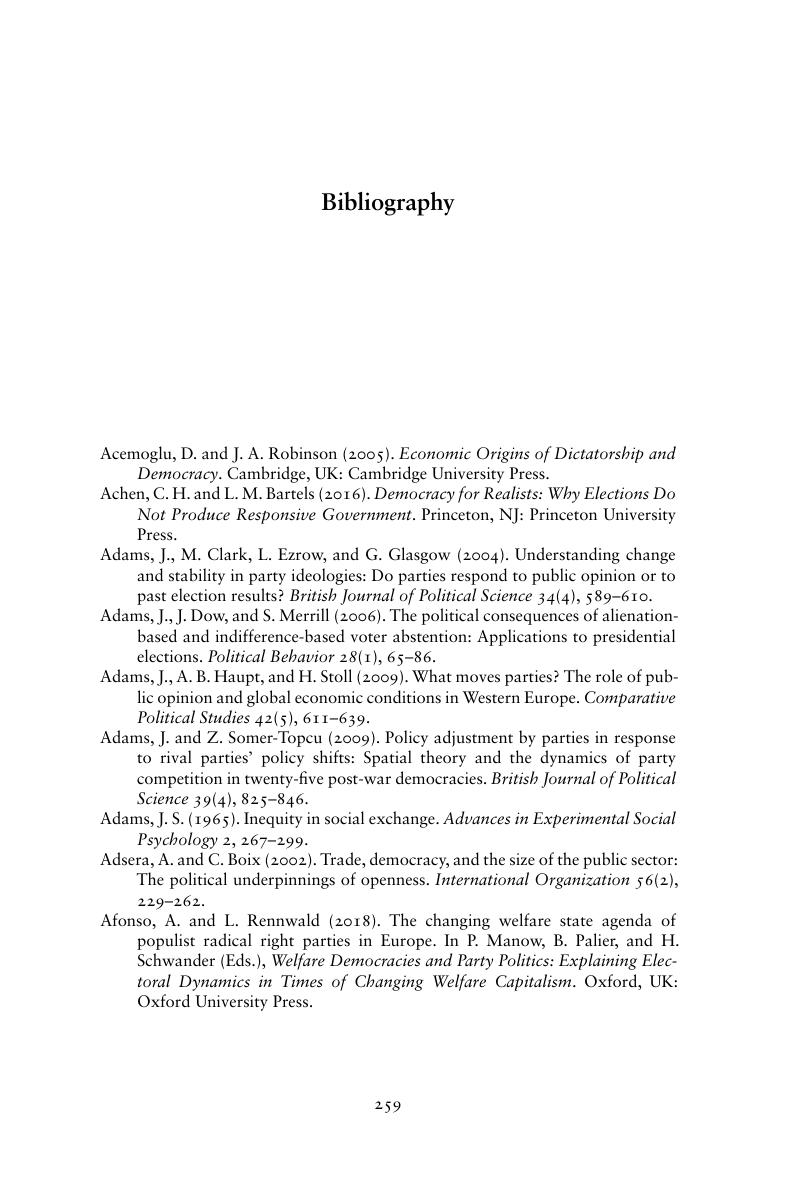Book contents
- Frontmatter
- Contents
- List of Figures
- List of Tables
- Acknowledgements
- 1 Introduction
- Part I Material Self-Interest: Redistribution and Insurance
- Part II Beyond Income: Externalities of Inequality
- Part III Beyond Income: Population Heterogeneity
- Part IV From Preferences to Voting
- A Appendices
- Bibliography
- Index
- Other Books in the Series
- References
Bibliography
Published online by Cambridge University Press: 22 August 2019
- Frontmatter
- Contents
- List of Figures
- List of Tables
- Acknowledgements
- 1 Introduction
- Part I Material Self-Interest: Redistribution and Insurance
- Part II Beyond Income: Externalities of Inequality
- Part III Beyond Income: Population Heterogeneity
- Part IV From Preferences to Voting
- A Appendices
- Bibliography
- Index
- Other Books in the Series
- References
Summary

- Type
- Chapter
- Information
- Who Wants What?Redistribution Preferences in Comparative Perspective, pp. 259 - 278Publisher: Cambridge University PressPrint publication year: 2019



